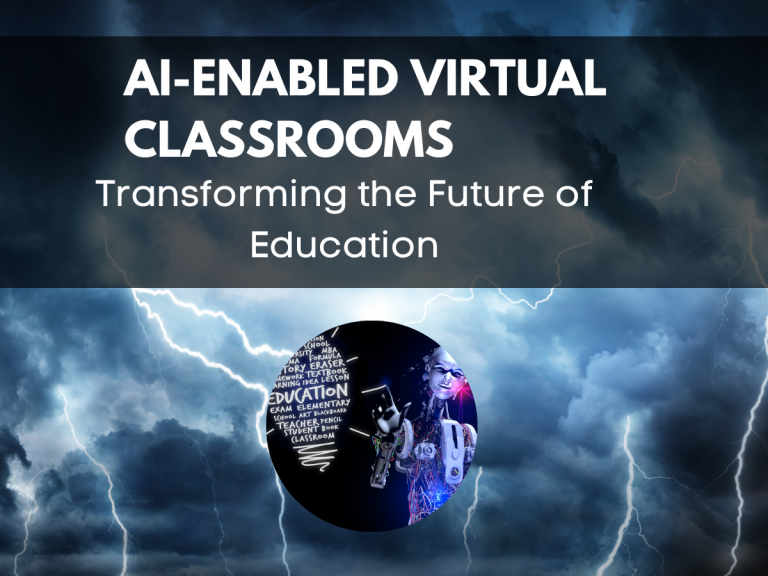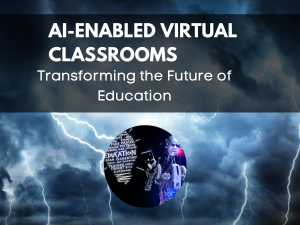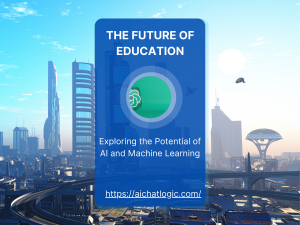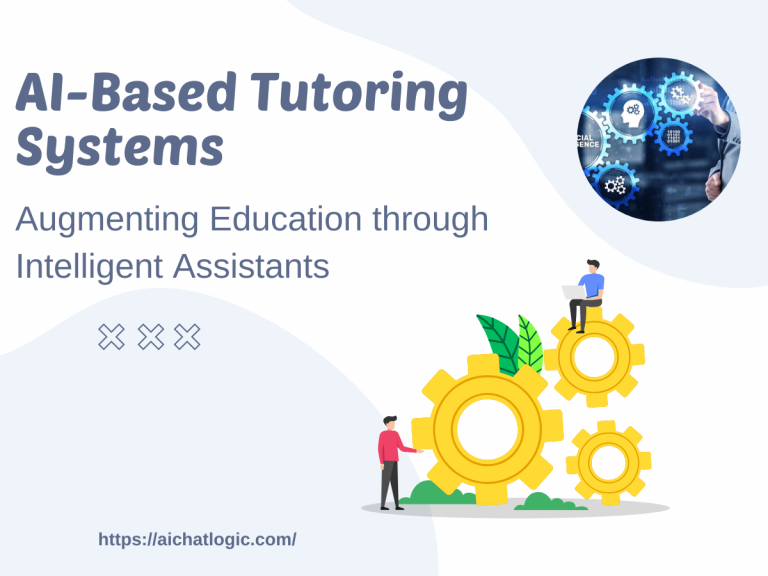1. Introduction
In the ever-evolving landscape of education, technology continues to play a significant role in transforming traditional teaching methods. AI-based tutoring systems, a technological advancement that has garnered attention and revolutionized the education sector, stands out as one of the significant advancements. These intelligent assistants, powered by artificial intelligence (AI), have the potential to augment education by providing personalized learning experiences. This article explores the concept of AI-based tutoring systems, their benefits, challenges, implementation in educational institutions, ethical considerations, and future perspectives.
2. Understanding AI-Based Tutoring Systems
AI-based tutoring systems are computer programs designed to simulate the role of a tutor or mentor. These systems utilize machine learning algorithms and natural language processing to interact with students, understand their learning needs, and provide tailored guidance and support. Through adaptive learning techniques, these systems analyze student performance, identify knowledge gaps, and deliver personalized learning materials and feedback.
3. The Role of Intelligent Assistants in Education
Intelligent assistants in education act as virtual tutors, assisting students in various subjects and topics. They can answer questions, explain complex concepts, provide real-time feedback, and offer additional resources for further exploration. These AI-powered assistants are available 24/7, enabling students to learn at their own pace and convenience. Furthermore, intelligent assistants can adapt their teaching methods based on individual learning styles, making education more accessible and engaging for students with diverse needs.
4. Benefits of AI-Based Tutoring Systems
4.1 Personalized Learning: AI-based tutoring systems can personalize the learning experience for each student, addressing their unique strengths, weaknesses, and learning preferences. By adapting the content and delivery based on individual needs, these systems enhance student engagement and promote effective learning.
4.2 Immediate Feedback: Intelligent assistants provide real-time feedback, enabling students to identify and correct mistakes promptly. This immediate feedback mechanism helps students to reinforce their understanding of concepts and improve their performance.
4.3 Enhanced Accessibility: AI-based tutoring systems break down barriers to education by providing equal access to resources and educational support. Students from remote areas or with physical disabilities can benefit from the flexibility and inclusivity offered by these systems.
4.4 Advanced Analytics: With AI-powered analytics, tutoring system can track student progress, identify learning patterns, and generate insights for educators. This data-driven approach allows teachers to make informed decisions and provide targeted interventions to students who require additional assistance.
5. Challenges and Limitations
5.1 Lack of Human Interaction: While AI-based tutoring systems offer personalized learning experiences, they lack the human touch and emotional connection that traditional classroom settings provide. Human interaction plays a crucial role in education, and striking a balance between AI-driven instruction and human guidance is essential.
5.2 Ethical Concerns: The use of AI in education raises ethical considerations, such as data privacy, bias in algorithms, and the potential for replacing human educators. It is crucial to address these concerns and ensure the responsible development and implementation of AI-based tutoring system.
5.3 Technical Limitations: AI technologies are constantly evolving, and there are technical challenges to overcome, such as natural language understanding, contextual comprehension, and limitations in the accuracy of automated assessments. Ongoing research and development efforts are necessary to improve these systems.
6. Implementing AI-Based Tutoring Systems in Educational Institutions
Implementing AI-based tutoring systems in educational institutions requires careful planning and collaboration between educators, technologists, and policymakers. The following steps can guide the successful integration of these systems:
6.1 Needs Assessment: Identify the specific educational needs and goals that can be addressed through AI-based tutoring systems. Determine the subjects, grade levels, or learning areas where these systems can make the most significant impact.
6.2 Training and Support: Provide adequate training and support to teachers and students to ensure they can effectively utilize the AI-based tutoring system. Familiarize educators with the system’s functionalities and assist students in navigating the platform.
6.3 Pilot Programs: Conduct pilot programs to assess the effectiveness and user experience of the AI-based tutoring system. Gather feedback from both educators and students to identify areas of improvement and refine the system accordingly.
6.4 Scalability and Sustainability: Consider the scalability and long-term sustainability of the AI-based tutoring system. Ensure that the infrastructure, technical support, and resources are in place to accommodate the integration of these systems across various educational institutions.
7. Ethical Considerations in AI-Based Tutoring Systems
As AI-based tutoring systems become more prevalent, it is essential to address the ethical considerations associated with their use. Some key ethical aspects to consider include:
7.1 Data Privacy: Safeguard student data and ensure compliance with relevant data protection regulations. Transparently communicate how student data will be collected, used, and protected within the AI-based tutoring system.
7.2 Algorithmic Bias: Mitigate bias in AI algorithms by regularly auditing and updating the underlying models. Ensure fairness and inclusivity in the content and recommendations provided by the tutoring system.
7.3 Human Oversight: Maintain a balance between automated tutoring and human guidance. Human educators should have the ability to intervene, provide additional context, and address any limitations of the AI-based tutoring system.
8. Future Perspectives of AI-Based Tutoring Systems
The future of AI-based tutoring systems holds immense potential for transforming education. Some key future perspectives include:
8.1 Virtual Reality Integration: Integration of virtual reality (VR) technology can enhance the immersive learning experience provided by AI-based tutoring system. VR can create realistic learning environments and simulations, enabling students to apply their knowledge in practical scenarios.
8.2 Natural Language Processing Advancements: Continued advancements in natural language processing will enable AI-based tutoring system to understand and respond to students’ queries and expressions more accurately. This will further improve the effectiveness and interactivity of these systems.
8.3 Personalized Learning Pathways: AI-based tutoring system will continue to refine their adaptive learning capabilities, enabling even more personalized learning pathways for students. By leveraging vast amounts of educational data, these systems can provide tailored content and recommendations at a granular level.
9. Conclusion
AI-based tutoring systems have the potential to revolutionize education by providing personalized, accessible, and engaging learning experiences. By leveraging AI technologies, these systems can adapt to individual student needs, offer immediate feedback, and empower educators with data-driven insights. However, it is crucial to address the challenges and ethical considerations associated with these systems to ensure their responsible implementation. As the field of AI continues to evolve, the future holds exciting possibilities for AI-based tutoring systems to augment education and empower learners worldwide.
FAQs
Q1: Are AI-based tutoring systems replacing human teachers?
No, AI-based tutoring systems are not intended to replace human teachers. They are designed to complement and enhance traditional educational approaches by providing personalized support and guidance to students.
Q2: How do AI-based tutoring systems personalize learning?
AI-based tutoring systems personalize learning by analyzing student performance, identifying knowledge gaps, and delivering tailored content and feedback. They adapt the learning experience to match each student’s individual needs, strengths, and learning preferences.
Q3: Can AI-based tutoring systems be used for all subjects?
Yes, AI-based tutoring systems can be used for a wide range of subjects. They can provide support in various disciplines, including mathematics, science, languages, and more.
Q4: How do AI-based tutoring systems ensure data privacy?
AI-based tutoring systems should prioritize data privacy by implementing robust security measures and complying with relevant data protection regulations. Student data should be collected, used, and protected in a transparent and responsible manner.
Q5: What role do human educators play in AI-based tutoring systems?
Human educators play a crucial role in AI-based tutoring systems. They provide the necessary context, emotional support, and guidance that AI systems cannot replicate. Human oversight ensures a balanced and effective learning experience for students.










+ There are no comments
Add yours